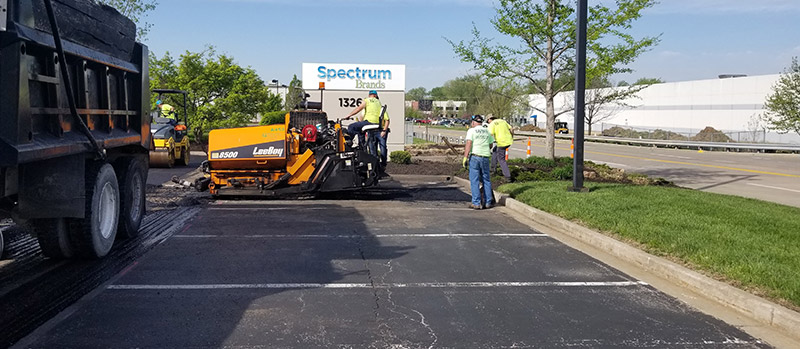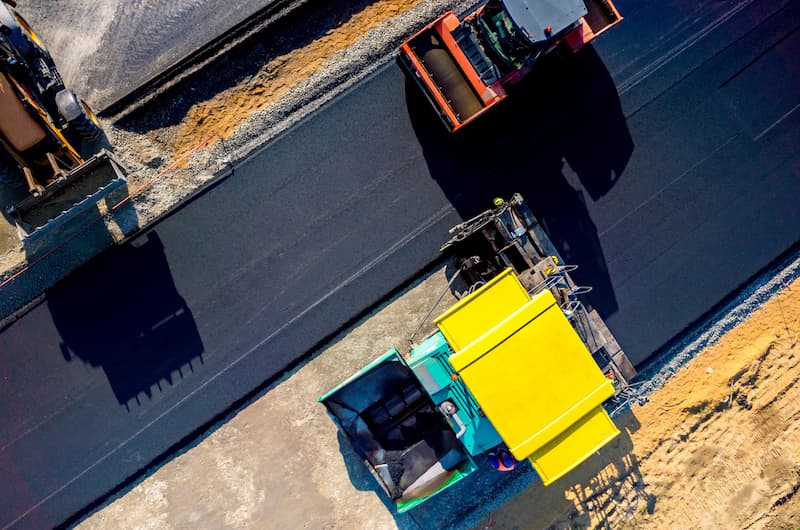What Does A1 Professional Asphalt & Sealing Llc Mean?
What Does A1 Professional Asphalt & Sealing Llc Mean?
Blog Article
Some Known Factual Statements About A1 Professional Asphalt & Sealing Llc
Table of ContentsThe Single Strategy To Use For A1 Professional Asphalt & Sealing LlcA Biased View of A1 Professional Asphalt & Sealing LlcWhat Does A1 Professional Asphalt & Sealing Llc Mean?A1 Professional Asphalt & Sealing Llc Fundamentals ExplainedThe Buzz on A1 Professional Asphalt & Sealing Llc

The oil in an auto engine is not simply oil. The REOB consists of all the ingredients that were in the waste oil as well as the wear metals from the engine (generally iron and copper).
Nevertheless, by making several blends making use of different REOB examples and various asphalt binders, the variations mainly can be balanced out. A number of States gave examples of known REOB structure to TFHRC scientists, that evaluated the examples to contrast the percent of added (known) REOB to the discovered (checked) quantity. The evaluations showed a similar portion of included and located REOB.
The Only Guide for A1 Professional Asphalt & Sealing Llc
None of those States understood that the asphalt they were purchasing included REOB. One State insisted its examples had no REOB - https://www.storeboard.com/a1professionalasphaltandsealingllc.
Of the 1,532 examples examined, 12 percent had REOB, and some included substantially high degrees of it at 1020 percent. The highest level was 34 percent in an example from Texas, which TxDOT had utilized in a patching substance. This testing additionally revealed the visibility of phosphoric acid in 11 percent of the samples, and 2 percent contained ground tire rubber.
Two years back at TRB's yearly meeting, the Federal researchers held an REOB workshop and provided the searchings for of their laboratory examinations to a standing room-only crowd. Although some firms do not specifically prohibit REOB, they do enforce physical examinations that avert its useeffectively a ban. a1 asphalt. Others do not prohibit it by spec, however have arrangements with asphalt suppliers to avoid making use of REOB
Some Known Details About A1 Professional Asphalt & Sealing Llc
A handful do allow REOB, some within certain limits. For instance, Ohio and Texas restriction levels to less than 5 percent of the asphalt. To create a reputable test approach that all States can utilize, the TFHRC researchers established up a round-robin test strategy. The participants are 11 State freeway agencies (Illinois, Massachusetts, Minnesota, Mississippi, Montana, North Carolina, Oklahoma, South Carolina, Texas, Vermont, and Wyoming), 2 independent screening labs, the Ministry of Transportation in Ontario, Queen's University in Ontario, and an Ontario paving contractor.
In overall, the scientists prepared and shipped 720 blends. The individuals Learn More Here are testing the examples independently utilizing the standards given by the TFHRC researchers. The round-robin testing is virtually finished, and TFHRC remains in the process of gathering the results. The result will be a suggested AASHTO examination method that any type of State can take on and use (asphalt paving repairs).
The pavement with REOB, which is situated 0.6 mile (1 kilometer) from the pavement without REOB, has similar subgrade, website traffic density, and climate. The segment of Highway655 with 5 to 10 percent REOB showed considerable fracturing. In this example, the visibility of REOB was the recognized root cause of cracking at a low temperatures.
"In our experience in Canada, also tiny amounts of 23 percent can be a trouble." Similarly, a section of test sidewalk in Minnesota (MN1-4) found to consist of REOB also broke too soon. The pavement performed well for the initial 3 to 4 years, yet then started to crack. This sidewalk is likewise subject to reduced temperatures.
Not known Details About A1 Professional Asphalt & Sealing Llc
The examinations were not comprehensive, yet they showed that at levels of 6 percent or even more, the tensile strength of the asphalt dropped significantly. At a degree of 3.5 percent REOB, the variant in the physical test techniques was greater than the result of REOB. In fact, it was tough for scientists to analyze whether REOB existed.

One binder specification considered is the distinction between the reduced temperature level essential spec temperature level for tightness (S) in the bending beam rheometer and the bending beam of light rheometer creep slope (m-value) kept in mind as Tcritical. Two independent research study groups, one from AASHTO and the various other from the Asphalt Institute, wrapped up that more study is needed on the usage of REOB in asphalt.
Formerly, all asphalt screening gauged design properties such as tightness. These examinations do not show what materials had actually been added to the asphalt. One sample gotten throughout the TFHRC study had a very odd analysis. The example had the adhering to test results: Superpave PG 64-28 with a heat grade of 67.3 Tcritical on the flexing beam of light rheometer was 6.7 degrees Celsius.

Not known Details About A1 Professional Asphalt & Sealing Llc
These results show there are weaknesses in the standard design screening methods that may be exploited. The manufacturer may have a financial benefit and the item passes all the standardized examinations, but the item may not be useful to making sure long-lasting efficiency. To address this issue and the expansion of new asphalt ingredients and extenders, TFHRC is starting a study program to utilize portable spectroscopic tools, x-ray fluorescence spectroscopy, and Fourier transform infrared spectroscopy to allow analyses to be performed in the field rather than having to take samples back to the laboratory.
Report this page